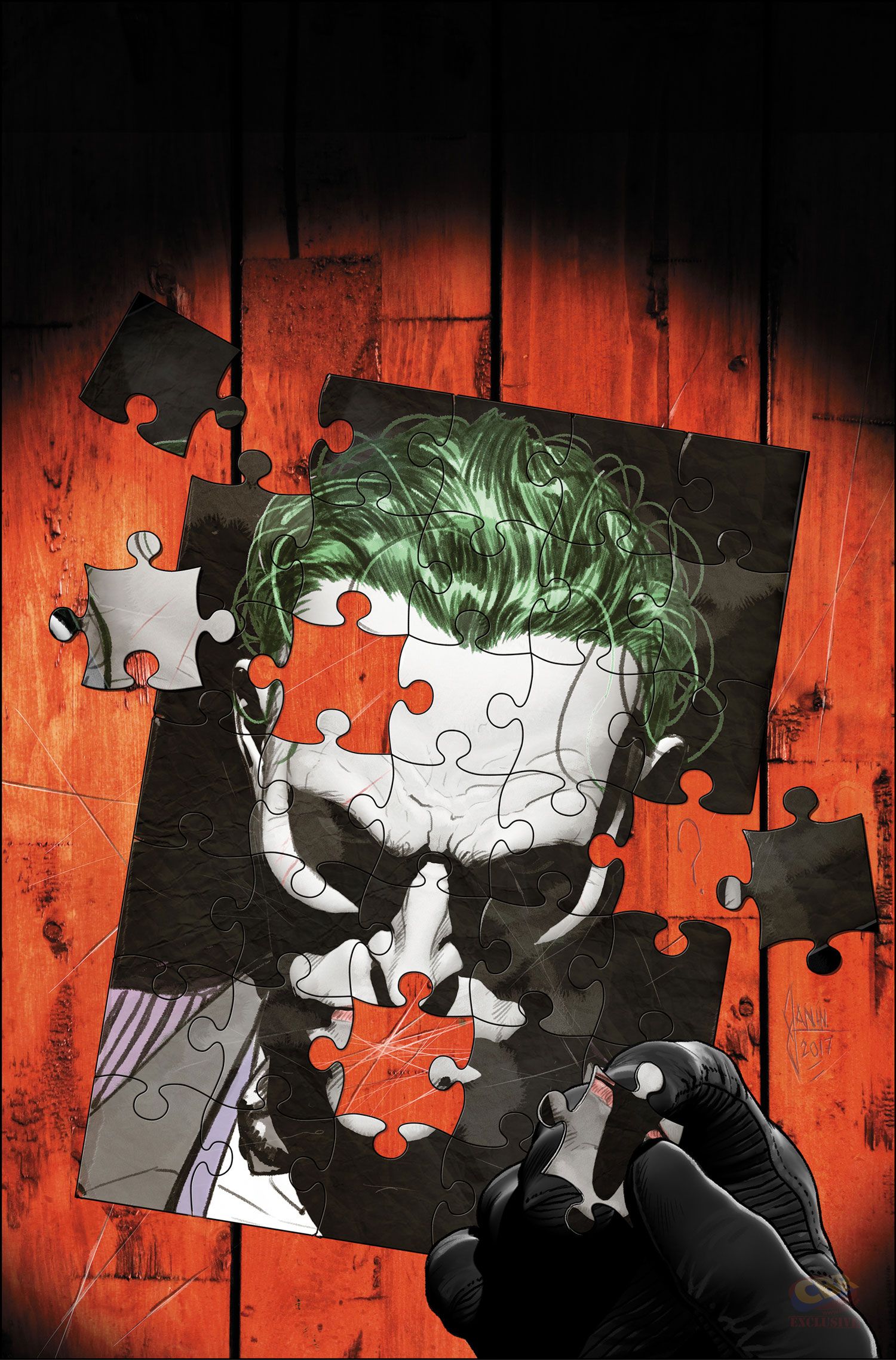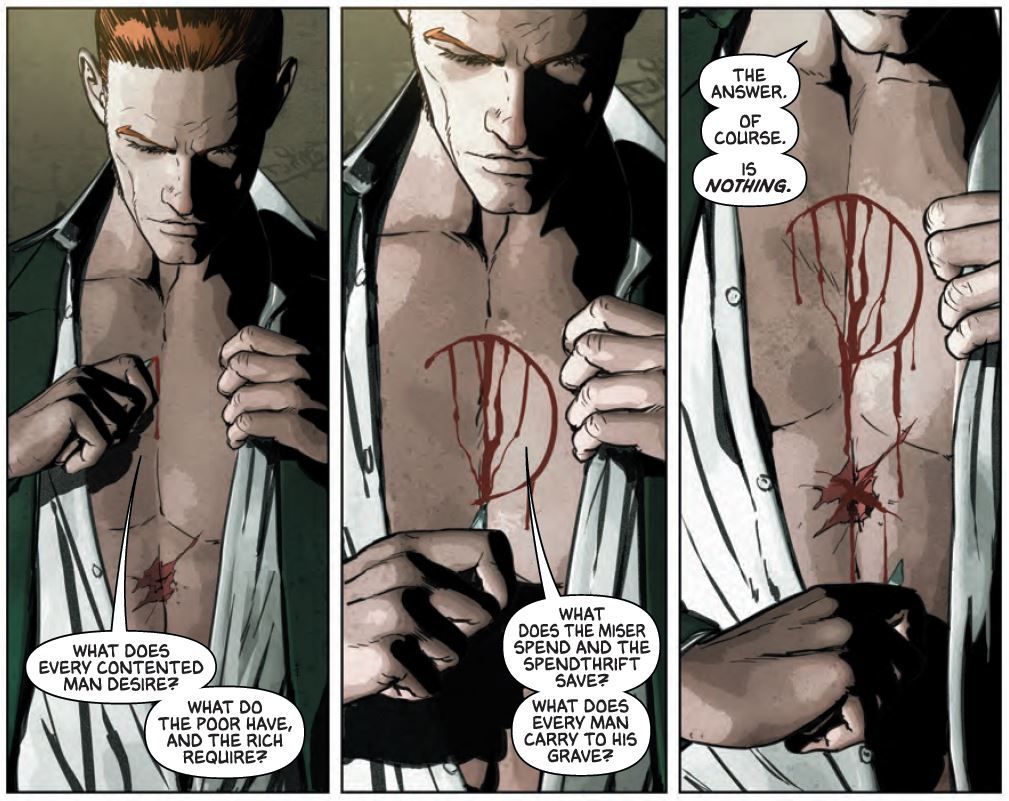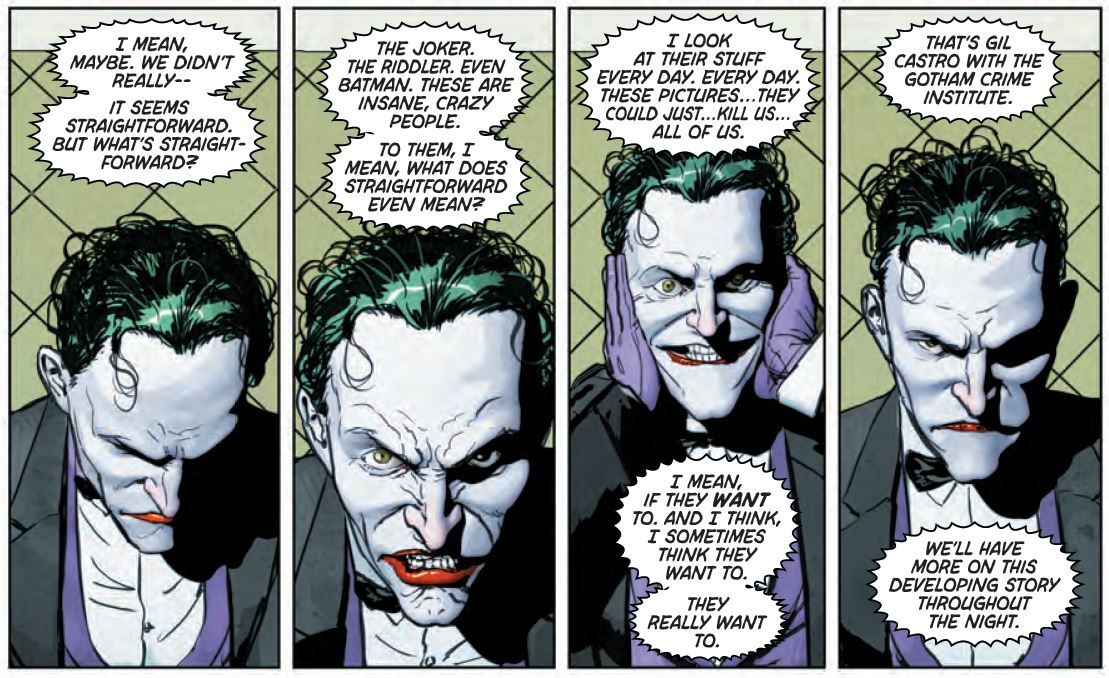REVIEW: Batman #26
- WRITER
- Tom King
- Artist
- Mikel Janín
- Letterer
- Clayton Cowles
- Cover Artist
- Mikel Janín
- Publisher
- DC Comics
- Price
- 2.99
- Release Date
- 2017-07-05
- Colorist
- June Chung
The second chapter of Tom King and Mikel Janín's "The War of Jokes and Riddles" unfolds in Batman #26, as a new dynamic continues to be forged between two of Batman's most notorious villains. Both darkly comedic foes figured strongly into Scott Snyder and Greg Capullo's New 52 run on the title, but were featured in largely independent storylines. Here, King takes the opportunity to establish a backstory to connect these two supervillains, one that goes beyond their mutual animosity with the Dark Knight.
RELATED: Batman: War of Jokes and Riddles’ Inciting Incident Revealed
In fact, Batman continues to serve as little more than as a narrator, relaying the story in past tense to Selina Kyle, as revealed at the end of last issue. That presents no problem story-wise, though – King continues to excel with his typical superb pacing and structure, while Janín brings King's story to life with almost lifelike precision, taking his place comfortably alongside the roster of artists that have beautifully executed King's story arcs throughout his run.
One of the highlights throughout this particular installment is King and Janín's repeated nods to past aspects from both the comics and films – Janín's Joker looks like he just jumped off of one of Brian Bolland's pages from Batman: The Killing Joke, and there's an eerily familiar-looking henchman who clearly was inspired from one of Tim Burton's films. King also lifts one scene directly from an early moment in Burton's 1989 Batman movie, although the scene's conclusion isn't the one that readers have seen before. King also acknowledges one particular Golden Age Batman artist whose name has long generated snickers from many a fanboy's covered mouths, but manages to do so with a modicum of respect by way of its context within the story.
Through Janín, King can tell his story in broader strokes than what normally might be required – he doesn't take the time to meticulously, and potentially tediously, explain how or why each villain chooses their side in The Riddler and The Joker's brewing war. Instead, Janín does so with a series of spreads that clearly lay out the playing field – the how's and why's are incidental to the idea that the two foes are going to war, which King and Janín establish through their focus on The Joker's growing frustrations with The Riddler's interference, and vice versa.
Elements from both the main storyline as well as the framing sequence uncover a couple of potential surprises for unwary readers – those believing this arc to simply be the next chronological story in King's run will find themselves questioning where it falls in Batman continuity. The final scene in the present-day sequence, though, possibly postulates a couple of clues as to Bruce Wayne's future, playing into developments established in King's recent storylines. King has enough issues under his belt to make readers start to suspect that whatever answers might be coming, they might not be the ones that readers expect.
King continues to do what he has done so well throughout his time on the title – using past elements and perfectly blending them to enhance his story, keeping readers turning the pages in anticipation of the next development, and peppering the script with as many questions as answers. Those answers, expected or otherwise, along with plenty of likely additional questions, stand to be addressed in part three of "The War of Jokes and Riddles" in Batman #27, on sale July 19.



